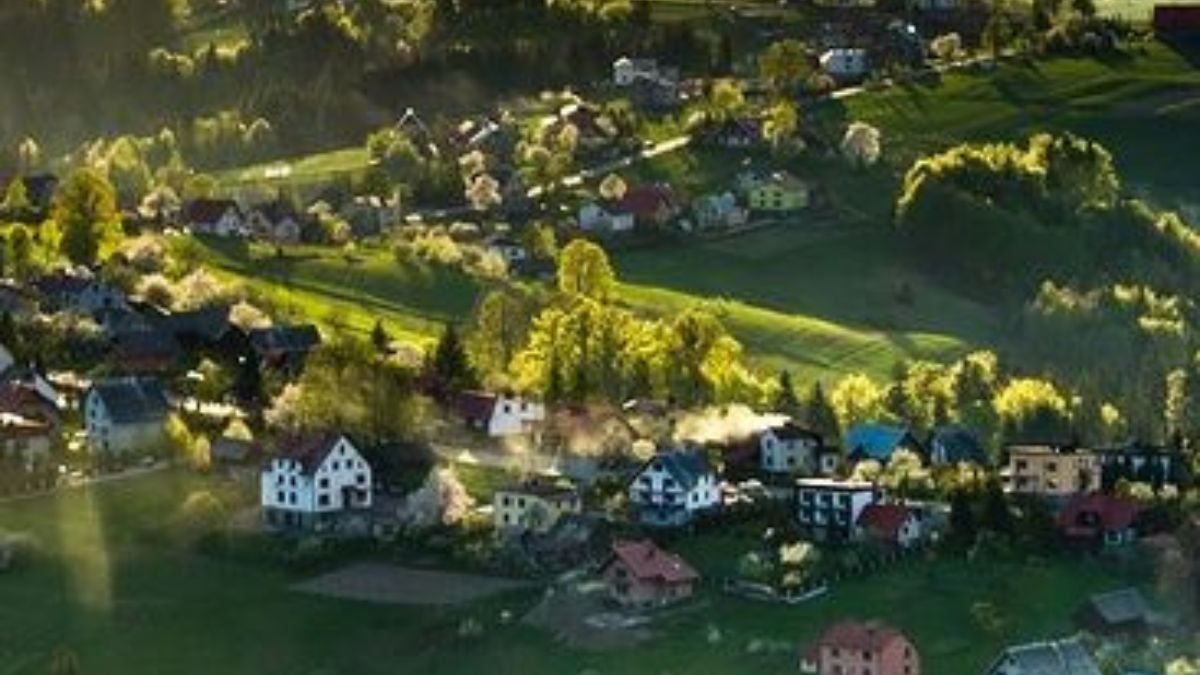Situated in central Poland, the little town of Iganiny has a wealth of historical significance. This picturesque rural setting provides an insight into genuine rural life in Poland, as well as local customs and legacy that spans generations, although it may not be on many popular tourist itineraries. If you’re looking for a peaceful and personal getaway or want to see more of Poland outside of the big cities, Iganiny is a hidden gem just waiting to be discovered.
Gmina Lututów, which is part of Wieruszów County, administers Iganiny, which is situated in the Łódź Voivodeship. Despite its little stature, this community is sure to enchant history buffs, culture vultures, and ecotourists with its distinct character and breathtaking scenery.
Historical Background of Iganiny
The events of Iganiny’s past mirror those of Poland as a whole. Established in the Middle Ages as a rural hamlet to serve the expanding agricultural economy, its origins are similar to those of many other communities in the area. Iganiny has weathered foreign occupations, seen kingdoms come and fall, and seen Poland transformed by war and political turmoil over the years.
Under Nazi rule, Iganiny and the rest of Poland endured the horrors of World War II. The settlement provided a safe haven for those escaping the fighting and was located on a secret path used by the resistance organization. The elder generation remembers its modest involvement during stormy times and records it in local folklore and oral history.
Much of Iganiny’s historic allure is still evident today. Old houses constructed in the traditional style and fields that have been tilled for generations may be seen during a stroll around the town. Because of these features, it is a real-life museum showcasing rural Polish history.
Cultural Significance and Traditions
Iganiny stands out due to its commitment to maintaining local traditions. This kind of village is fundamental to Polish culture. Throughout the year, there are full-throated celebrations of religious processions, harvest festivals, and traditional festivals. The Dożynki, or harvest festival, is a treasured tradition in Iganiny. During this event, locals don folk costumes, perform traditional songs, and display beautifully designed harvest wreaths.
The culture of the hamlet also includes a strong emphasis on Polish hospitality. Iganiny is known for its handmade bread, local cheese, and substantial soups, which are commonly served to visitors. People here are kind and open with tales of family history and community pride.
The Natural Landscape of Iganiny
Iganiny is a haven for ecotourists because to its attractive setting among agriculture, meadows, and forests. Surrounding the town is tranquil farmland, perfect for quiet strolls and those rare moments of serenity away from the hustle and bustle of city life.
Wildflowers cover the fields in the spring and summer, while little streams wind their way through the meadows. Photographers are captivated by the picturesque sunrises and sunsets that the expansive terrain offers, while birdwatchers like the opportunity to observe local species in their original environment.
Living at a leisurely pace in Iganiny helps one to feel more one with nature. The village is a great place to get away from the hustle and bustle of city life, whether you’re looking to enjoy some fresh air, explore a local path, or learn about rural farming.
The Role of Agriculture
Economically and culturally, agriculture is paramount in Iganiny. The majority of households raise a few crops on their farms, including potatoes, wheat, rye, and seasonal veggies. As a community, we really embrace the cooperative spirit when we get together during planting and harvesting seasons.
Traditional food preservation techniques, such as smoking and pickling, are still widely used, and many households rear livestock, including pigs, cows, and chickens. The food here is fresh and unprocessed, tasting far better than the mass-produced goods you’d get in stores, and the agricultural methods are sustainable and organic, handed down through the generations.
Educational and Religious Institutions
Despite its little size, Iganiny is home to many religious and educational institutions. A primary school is usually located in the village, and it is the social and educational center for the younger generation. These schools make sure that kids have a strong feeling of who they are by teaching them both the national curriculum and local history and customs alongside the traditional courses.
A church, which is usually situated in the middle of town, is another important part of village life. It is the site of many community gatherings, including weddings, baptisms, and weekly Mass. The church in Iganiny is more than just a house of worship; it also represents the community’s common beliefs and ideals.
Community Life and Modern Changes
Much like other rural places, Iganiny is gradually changing. The younger generation is more connected to global trends than ever before because to increased infrastructure and internet access. While some young people do go to cities like Łódź or Warsaw for education or employment, many come back to continue family traditions or just enjoy a slower pace of life after spending time in the city.
Community life in Iganiny is robust despite these changes. Everyone knows one other’s names, and helping out one another’s neighbors is the norm. Villagers show a kind of solidarity that is becoming more and more unusual in today’s world when they pitch in to help out around the farm, celebrate a wedding, or grieve a death.
Tourism Potential of Iganiny
Despite Iganiny’s unusual reputation, the island might become a major hub for agro- and cultural tourism. This peaceful nook is perfect for those seeking a more leisurely and immersed experience in Poland. There are many ways to improve one’s life, such as staying at a nearby farmhouse, learning traditional bread baking, helping out with seasonal farm chores, or going to a folk music night.
Ecotourism may also be developed via organizing guided nature walks, birding excursions, and courses on traditional crafts such as weaving or ceramics. Iganiny has the potential to draw in a certain kind of tourist—one that prioritizes authenticity above opulence—if given the proper backing.
Preserving Iganiny’s Identity
Maintaining the unique character of towns like Iganiny is crucial as Poland keeps progressing toward modernization. This includes preserving its landscapes, paying homage to its past, and promoting the upkeep of ancient activities. On a smaller scale, local governments and cultural preservation organizations have begun recording oral histories, safeguarding regional languages, and restoring historic structures.
An important aspect of this endeavor is teaching the younger generation about the village’s history. Instilling a sense of pride in one’s heritage in future generations is a shared responsibility of families and schools. Iganiny may embrace change while preserving its heritage if its inhabitants make an effort to do so.
Conclusion
Iganiny is more than a geographical point; it exemplifies the resiliency and rural culture that persist throughout Poland. In a fast-paced and technologically-enabled world, this village provides an opportunity to pause, contemplate, and establish a connection with a lifestyle that prioritizes community, environment, and heritage. Iganiny warmly welcomes those who seek it, whether they are history buffs, interested travelers, or those seeking to find their origins.
A cultural legacy as priceless as any monument or museum may be protected by honoring and keeping alive little towns like Iganiny. Oftentimes, the least famous locations are the ones that have yet to become famous.

